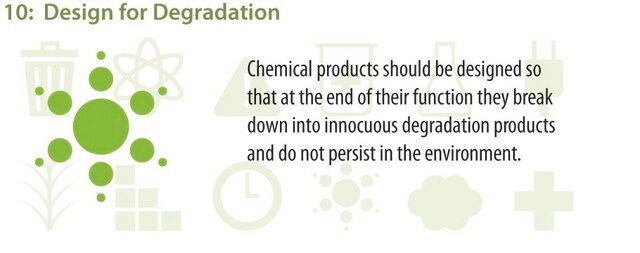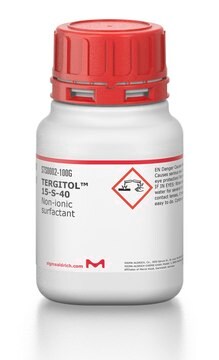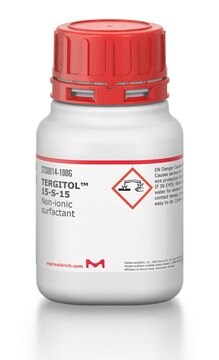15S9
TERGITOL™
Type 15-S-9
Sinónimos:
Secondary alcohol ethoxylate
About This Item
Productos recomendados
descripción
non-ionic
Nivel de calidad
tpo
Type 15-S-9
formulario
liquid
mol peso
596 g/mol
características de los productos alternativos más sostenibles
Design for Degradation
Learn more about the Principles of Green Chemistry.
sustainability
Greener Alternative Product
CMC
52 ppm
temperatura de transición
cloud point 60 °C
pour point 9 °C
HLB
13.3
categoría alternativa más sostenible
¿Está buscando productos similares? Visita Guía de comparación de productos
Descripción general
Tergitol™ 15-S-9 is a linear non-ionic surfactant that is a secondary ethoxylated alcohol. This clear liquid surfactant is compatible with anionic, cationic, and other nonionic surfactants.
Aplicación
- To synthesize thermally stable mesoporous alumina
- To synthesize porous TiO2
- Along with SDS, ethanol and water for continuous phase preparations in electrospray emulsification
- In the synthesis of Lath-like γ-alumina and boehmite nanofibers
Características y beneficios
- Superior detergency
- Rapid dissolution & good rinseability
- Excellent formulation & handling properties
- Narrow gel range
- Readily biodegradable (OECD 301E)
- Low odor
Información legal
Palabra de señalización
Danger
Frases de peligro
Consejos de prudencia
Clasificaciones de peligro
Eye Dam. 1 - Skin Irrit. 2
Código de clase de almacenamiento
10 - Combustible liquids
Clase de riesgo para el agua (WGK)
WGK 3
Punto de inflamabilidad (°F)
469.4 °F - open cup
Punto de inflamabilidad (°C)
243 °C - open cup
Equipo de protección personal
Eyeshields, Gloves, multi-purpose combination respirator cartridge (US)
Certificados de análisis (COA)
Busque Certificados de análisis (COA) introduciendo el número de lote del producto. Los números de lote se encuentran en la etiqueta del producto después de las palabras «Lot» o «Batch»
¿Ya tiene este producto?
Encuentre la documentación para los productos que ha comprado recientemente en la Biblioteca de documentos.
Los clientes también vieron
Contenido relacionado
An overview of cell lysis and protein extraction methods including detergent solubilization, freeze-thaw lysis, osmotic shock, sonication, enzymatic cell lysis, and mechanical disruption techniques such as Dounce, Polytron, and mortar and pestle homogenization.
An overview of cell lysis and protein extraction methods including detergent solubilization, freeze-thaw lysis, osmotic shock, sonication, enzymatic cell lysis, and mechanical disruption techniques such as Dounce, Polytron, and mortar and pestle homogenization.
Nuestro equipo de científicos tiene experiencia en todas las áreas de investigación: Ciencias de la vida, Ciencia de los materiales, Síntesis química, Cromatografía, Analítica y muchas otras.
Póngase en contacto con el Servicio técnico








